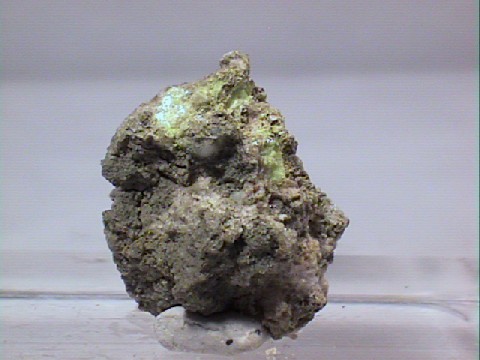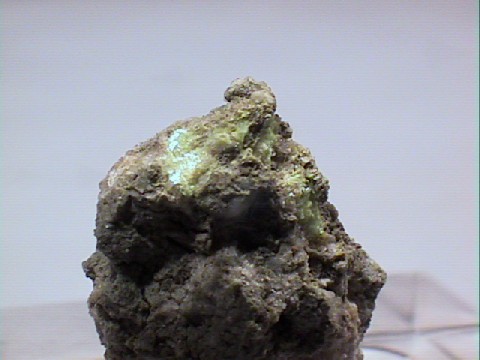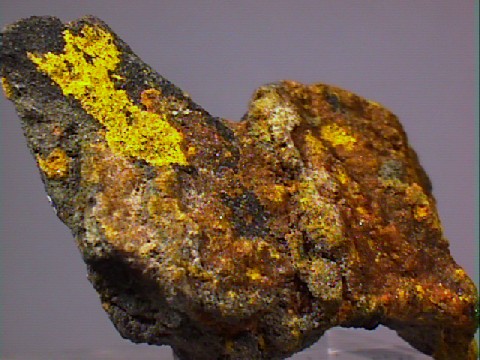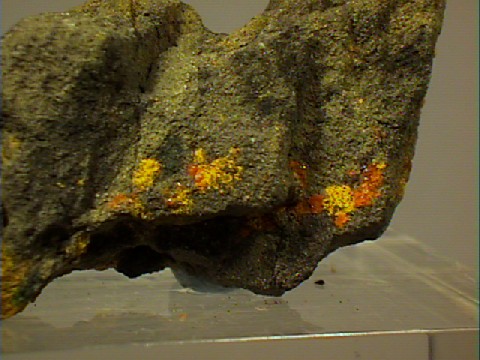 THE MINERAL SCHROCKINGERITE
THE MINERAL SCHROCKINGERITE
- Chemistry: NaCa3UO2SO4(CO3)3F - 10H2O, Hydrated Sodium Calcium Uranyl Sulfate Carbonate Fluoride.
- Class: Carbonates
- Uses: As a very insignificant source of uranium and as mineral specimens.
Specimens
Schrockingerite, also spelled schroeckingerite
or schrokingerite,
is one of the few uranyl carbonate minerals that is found on the mineral markets.
Other uranyl carbonates include
andersonite,
PHYSICAL CHARACTERISTICS:
- Color is yellow-green.
- Luster is vitreous to pearly.
- Transparency: Crystals are transparent to translucent.
- Crystal System is triclinic.
- Crystal Habits include pseudohexagonal platy crystals and encrustations.
- Cleavage is perfect in one direction.
- Hardness is 2.5.
- Specific Gravity is 2.5 - 2.6 (slightly below average for a translucent mineral)
- Streak is slightly off-white.
- Other Characteristics Some specimens are
fluorescent . - Associated Minerals include clays,
gypsum,
johannite , andersonite,swartzite andbayleyite and other secondary uranium minerals. - Notable Occurrences include the type locality of Jachymov, Zapadocesky kraj, Czech Republic as well as the Miller Ranch deposit, Kern County, California; Hillside Mine, Yavapai County, Arizona and Lost Creek, Sweetwater, Wyoming, USA; La Soberania Mine, San Isidro, Mendoza, Argentina.
- Best Field Indicators: Crystal habit, color, associations, fluorescence and locality.






